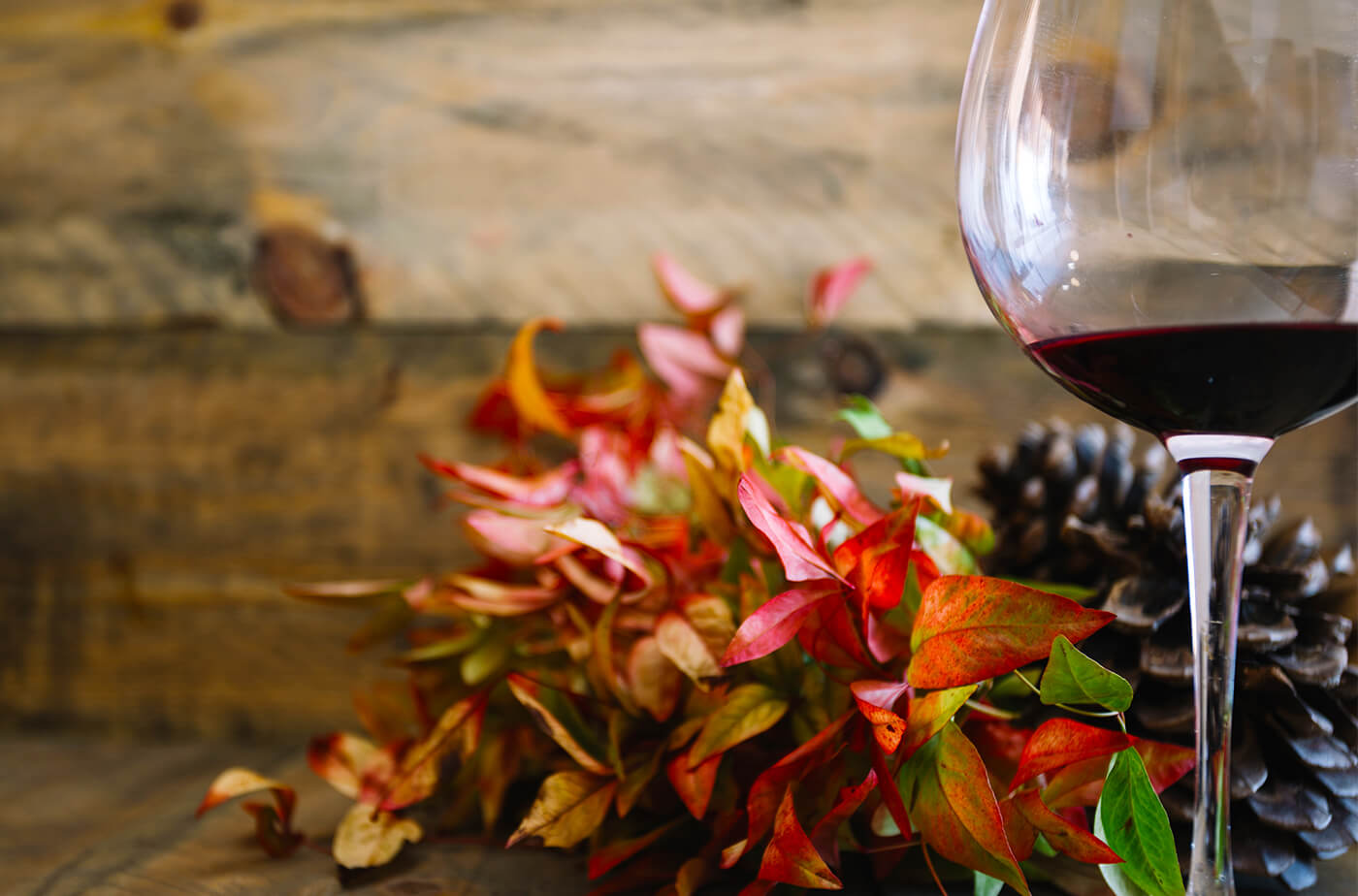The choice of wine depends on a number of factors: the occasion, the dish and the temperature outside. The seasons influence our preferences and the way we enjoy wine. A cool wine is ideal in summer, while a more structured wine is ideal in winter.
Find out how to choose spring wine, summer wine, autumn wine and winter wine to make the most of each season.
Spring: fresh, floral wines

With the return of fine weather, people are turning to light, aromatic wines. Spring is the ideal time to enjoy lively white wines, fruity rosés and supple reds.
Spring white wines
Dry, fresh white wines are lively on the palate.
- Sauvignon Blanc: its lemony, floral character is perfect for spring salads.
- Chenin Blanc: dry or slightly mellow, it goes well with light dishes.
- Muscat Sec: its notes of white flowers and fresh fruit are ideal for sunny aperitifs.
Rosé wines
Spring wine often rhymes with rosé, a symbol of conviviality.
- Rosé de Provence: fresh and fruity, it goes well with Mediterranean dishes.
- Tavel: more structured, it goes well with springtime grilled meats.
Light spring reds
Red wines should be supple and low in tannin.
- Pinot Noir: light and fruity, perfect for white meats or grilled vegetables.
- Gamay: its fresh, gourmet character is perfect for seasonal dishes.
Summer: fresh and light

When temperatures rise, we look for thirst-quenching, easy-drinking wines with low alcohol content.
Summer whites
A summer wine should be fresh and aromatic.
- Riesling: dry and mineral, it goes well with seafood.
- Vermentino: its liveliness is ideal for Mediterranean dishes.
- Chablis: with its fine acidity, it sublimates grilled fish.
The must-have rosés
Summer is the rosé season par excellence.
- Côtes de Provence: light and fruity, perfect for aperitifs on the terrace.
- Cabernet d'Anjou: slightly sweet, it goes well with exotic dishes.
Summer reds
Some reds can be enjoyed chilled, at a temperature of around 14°C.
- Beaujolais: light and fruity, it bears slight chilling.
- Cinsault: supple and aromatic, it goes well with grilled meats.
Autumn: round, balanced wines

Autumn heralds the return of more substantial dishes. Autumn wine should be more structured and accompany comforting dishes.
Whites with evolved aromas
Autumnal whites gain in complexity and roundness.
- Viognier: its apricot and honey notes go well with rich dishes.
- Gewurztraminer: fragrant and spicy, it goes well with exotic cuisine.
- Meursault: a full-bodied Chardonnay for white meats in sauce.
Characteristic reds
Autumn marks the return of full-bodied red wines.
- Merlot: round and fruity, it goes well with stewed dishes.
- Grenache: warm, it pairs well with cheeses and braised meats.
- Nebbiolo: powerful and tannic, perfect for rich dishes.
Winter: powerful, warm wines

In winter, we prefer wines that bring warmth and comfort. Dishes are richer, so wines need to match.
Creamy whites
Winter white wines are often woody and more complex.
- Sauternes: ideal with blue-veined cheeses.
- Vin Jaune du Jura: its unique character enhances cream-based dishes.
- Chardonnay de Bourgogne: rich and intense, perfect for dishes with sauce.
Powerful, tannic reds
Winter wines are often structured, with a good tannic presence.
- Cabernet Sauvignon: intense and deep, it goes well with red meats.
- Syrah: its spicy notes are perfect for dishes in sauce and stews.
- Malbec: full-bodied and robust, it goes well with game dishes.
Adapting wine service to the seasons
Whatever the season, operating temperature plays an essential role.
- Summer whites and rosés should be served chilled, between 8 and 12°C.
- Light spring reds can be enjoyed between 12 and 14°C.
- Full-bodied winter reds should be around 16 to 18°C.
Proper storage and aeration allow each wine to be appreciated at its true value.
Conclusion
The choice of wine evolves with the seasons. Spring rhymes with freshness and lightness, summer with liveliness and suppleness, autumn with roundness and balance, while winter is accompanied by powerful, warm wines.
Adapting your wine to the seasons allows you to take full advantage of the flavors and pairings with the dishes of the moment.
If you enjoyed this article, you may also be interested in "What is a natural wine?





